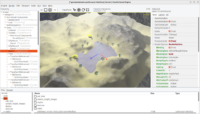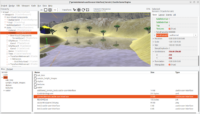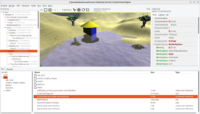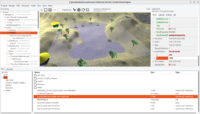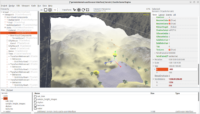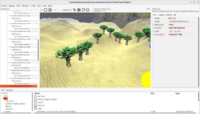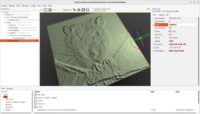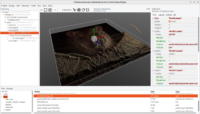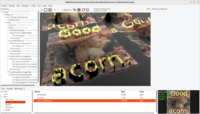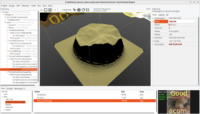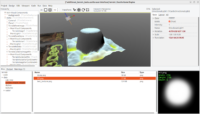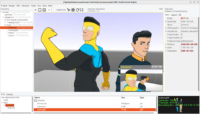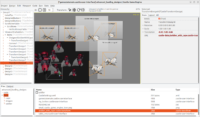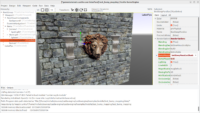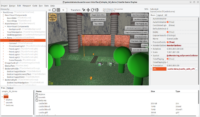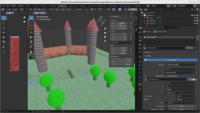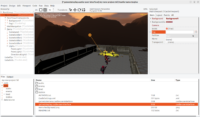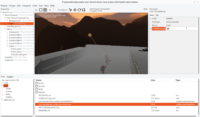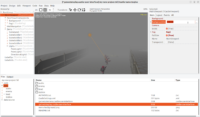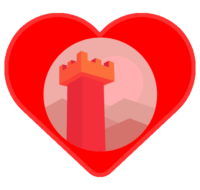 |
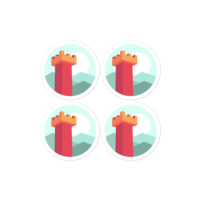 |
The support we get through our Patreon page is a big thing for us. It is a donation system that really works and in the ideal future I would like to see engine development funded by this model. So we really appreciate your support on Patreon!
New Patreon tiers and rewards
-

Discord Role and Channel for Donors (5 USD / month):
You get a “Donor” role on our Discord chat. The role gives your nick a special color, and access to the
#donorschannel on Discord.Make sure to connect your Patreon account to Discord (more info in Patreon article about this).
-
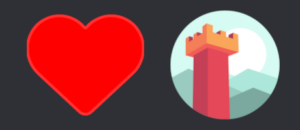
Mention in Credits and Stickers (10 USD / month):
-
Mention on the Credits page. Note: by default I will use your name from Patreon. if you want me to use anything else, or wish to remain anonymous, just write to me.
-
And stickers! After 3 months of being a donor on this tier, you get a collection of 4 stickers. Delivered anywhere in the world (just set your shipping address on Patreon).
-
-

Monthly Consultations (50 USD / month):
In addition to the benefits from previous tiers, you are invited to a monthly meeting scheduled by Michalis for all Patrons on this tier. Please drop by and let’s talk! I can e.g. answer questions about the engine and help you with your project.
New Patreon goals
-
250 USD: We get tangible proof that we can fund engine development through Patreon!
Right now we are hiring 1 developer (Andrzej Kilijański) at 1/2 FTE, paid from Michalis own pocket. As we reach further goals, I hope that money from Patreon can cover this cost — and allow to hire more people.
Reaching this goal will also deserve a little dance of joy with my cat!
-
500 USD: We add a tier with T-shirts (more merch!) to our Patreon offering.
-
1000 USD: We hire additional person to our team (developer or gfx arist) to work regularly on the engine.
Why do we need your support on Patreon
Short story, looking into the past: Almost 2 years ago I decided to hire from my own savings Andrzej Kilijański to work part-time (regular 1/2 FTE) on the engine. And this was one of the smartest decisions I made. The amount of features we added to Castle Game Engine together with Andrzej in recent years is amazing, I’m proud that the engine is today on a completely different “level” than it was 2 years ago.
Looking into the future: We obviously want more. More dedicated people who can contribute regular time to the engine development. Programmers but artists too. And my ideal plan to make it happen is to get donations through Patreon to make it possible.
Business (companies) support
Though I called Patreon my ideal plan above, there are alternative plans and additional plans. First of all I would like to get companies to support the engine (possibly in exchange for on-going support or even a specific feature development, depending on the contribution level). I have plans to explore this (contact me if you have/know a company that would like to sponsor Castle Game Engine). In an ideal future, we get a diversity of supporters (both community and business) and with this — freedom to follow our priorities (to just make the best open-source game engine that features both a visual editor and a powerful code API).
Why changes?
As I outlined in a previous post about Patreon, I got a little dissatisfied with our current tiers and goals. I constantly feel I fail to make the things I promised —
- E.g. I don’t do much “secret” posts only for supporters on Patreon (because I prefer doing public posts, for everyone to enjoy).
-
And I suck at making the features and videos requested by Patrons — it takes me way too much time to get to them, because in the meantime I do other features and videos that I consider “this has more urgent priority now”.
And I already started doing some late goals, paying no attention to whether we have achieved them financially:
- we have regular meetings on Discord called “open meetings” – next one is next week!
-
GitHub Actions and GitLab CI are a practical answer to the dream “continuous integration for free for everyone” that I wanted.
I hope that new rewards will be better 🙂 Thanks for reading and take care!
